 W
WAi Weiwei is a Chinese contemporary artist and activist. Ai grew up in the far north-west of China, where he lived under harsh conditions due to his father's exile. As an activist, he has been openly critical of the Chinese Government's stance on democracy and human rights. He investigated government corruption and cover-ups, in particular the Sichuan schools corruption scandal following the collapse of "tofu-dreg schools" in the 2008 Sichuan earthquake. In 2011, Ai Weiwei was arrested at Beijing Capital International Airport on 3 April, for "economic crimes". He was detained for 81 days without charge. Ai Weiwei emerged as a vital instigator in Chinese cultural development, an architect of Chinese modernism, and one of the nation's most vocal political commentators.
 W
WBanksy is a pseudonymous England-based street artist, political activist, and film director whose real name and identity remain unconfirmed and the subject of speculation. Active since the 1990s, his satirical street art and subversive epigrams combine dark humour with graffiti executed in a distinctive stenciling technique. His works of political and social commentary have appeared on streets, walls, and bridges throughout the world. Banksy's work grew out of the Bristol underground scene, which involved collaborations between artists and musicians. Banksy says that he was inspired by 3D, a graffiti artist and founding member of the musical group Massive Attack.
 W
WSteve Bell is an English political cartoonist, whose work appears in The Guardian and other publications. He is known for his left-wing views.
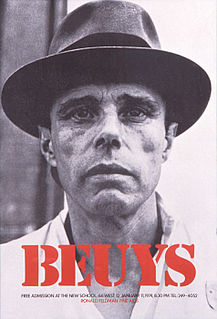 W
WJoseph Heinrich Beuys was a German artist, teacher, and theorist of art who was highly influential in international contemporary art in the latter half of the 20th century. He is a founder of the art movement known as Fluxus, and a practitioner and exemplar of happenings, and performance art. He adopted media and techniques including paint, sculpture, graphic art, and installation.
 W
WBleepsgr is the pseudonym used by V.(M.) Kakouris, who is a Greek artist. He creates political street art, paintings and installations; he is associated with the artivism movement. Much of his street art is in Athens, but his paintings are also to be found in other parts of Greece, and more widely in Europe.
 W
WYadesa Bojia is a Seattle-based Ethiopian graphic designer and artist. Bojia has exhibited regionally since 2006. In 2010, he rose to international acclaim when his design was selected for the African Union's flag. Bojia has shown his work in exhibitions, completed commissioned works, and given public talks about the themes of his work, including human rights, minority rights, Africa, and justice. Bojia's style as a painter draws on African impressionism.
 W
WPanmela Castro, also known as Anarkia Boladona, is a Brazilian artist who utilizes graffiti as a platform to raise awareness on women's rights and the prevalence of domestic violence occurring to women in Brazil. In the year 2006, Brazil had passed a landmark law, called the Maria da Penha Law. This law recognized that physical abuse towards women should be illegal and violates human rights. Many women in Brazil did not know that this law existed. Panmela Castro recognized this, and decided to spread this law through graffiti art. She hoped that through her art, women in Brazil would know that they have rights, and that there is legal protection for women.
 W
WGeorge Chakravarthi is a multi-disciplinary artist working with photography, video, painting and performance. His work addresses the politics of identity including race, sexuality and gender, and also religious iconography among other subjects. He was born in India and moved to London, England in 1980.
 W
WCritical Art Ensemble (CAE) is a collective of five tactical media practitioners of various specializations including computer graphics and web design, film/video, photography, text art, book art, and performance. For CAE, tactical media is situational, ephemeral, and self-terminating. It encourages the use of any media that will engage a particular socio-political context in order to create molecular interventions and semiotic shocks that collectively could diminish the rising intensity of authoritarian culture.
 W
WBrian Dailey is an American artist noted for his careers in both art and international relations. His work in a variety of mediums—including photography, film, installations, and painting—engages with the social, political, and cultural issues of our times and is not easily categorized. Dailey's art reflects his unconventional evolution as an artist and multifaceted life experiences, which include national level involvement in arms control, space policy, intelligence systems, and international security. He is based in the Washington DC metropolitan area and maintains studios in the District and Woodstock, Virginia.
 W
WDaku is a pseudonymous graffiti artist from Delhi, India. Active since 2008, he painted art in several cities across India commenting on social and political issues.
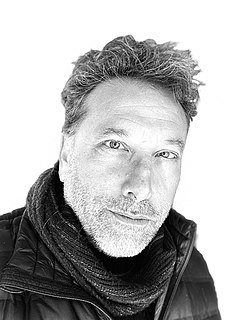 W
WRodrigo Dorfman is a multimedia award-winning filmmaker and producer living in Durham, North Carolina. He has worked with POV, HBO, Salma Hayek's Ventanazul and the BBC among others. His films have been screened at some of the top international film festivals in the world.
 W
WEmily Elbert is an American singer-songwriter and guitarist based in Los Angeles, California. She has independently released five albums: Bright Side (2006), Proof (2010), and Alive, In Love (2011), Evolve (2013), and We Who Believe in Freedom (2018), as well as numerous singles.
 W
WMark Farid is an artist, producer, speaker, and cultural critic based in London. He is best known for his project Seeing I, which drew global media attention. He has also received press coverage for Data Shadow and Poisonous Antidote.
 W
WHarley Gaber was a visual artist and composer known for his minimalist and spectral approaches to time and sound. With his emphasis on quiet sustained sonorities and textures, Gaber is counted among the early American minimalist composers, and considered to be a forerunner of drone and spectralism. His best known recorded composition, The Winds Rise in the North, has been called by musician Keith Fullerton Whitman "one of the holy grails of minimalism in music in the 20th century."
 W
WDavid Garner is a Welsh installation artist known for his use of found objects and overtly political themes.
 W
WMatthias Laurenz Gräff is an Austrian academic painter, private historian political activist and organizer of the non-partisan platform Dialog im Kamptal from Gars am Kamp. His political paintings are published by national and international books, magazines and blogs.
 W
WWilliam Victor "Bill" Gropper was a U.S. cartoonist, painter, lithographer, and muralist. A committed radical, Gropper is best known for the political work which he contributed to such left wing publications as The Revolutionary Age, The Liberator, The New Masses, The Worker, and The Morning Freiheit.
 W
WGeorge Grosz was a German artist known especially for his caricatural drawings and paintings of Berlin life in the 1920s. He was a prominent member of the Berlin Dada and New Objectivity groups during the Weimar Republic. He immigrated to the United States in 1933, and became a naturalized citizen in 1938. Abandoning the style and subject matter of his earlier work, he exhibited regularly and taught for many years at the Art Students League of New York. In 1959 he returned to Berlin, where he died shortly afterwards.
 W
WJasmin Hagendorfer is a Vienna-based contemporary artist, writer, curator, producer and festival organizer. She is one of the founders and creative director of the Porn Film Festival Vienna. Since 2019 she is the creative director of Transition International Queer & Minorities Film Festival. Her main artistic interest is in installation, sculpture and performance, and her work has been exhibited in Austria, Germany, Turkey, Serbia and Greece. As an artist she is concerned with social and political discourses and questions about gender identity with an emphasis on post-porn political works. Her studio is based in Stockerau near Vienna.
 W
WEllie Harrison is a British artist known for her use of large quantities of data, collected through labour-intensive games, trials, systems and experiments, and, more recently, for her activist work campaigning for the re-nationalisation of Britain's railways and founder of Campaign to Bring Back British Rail. She is based in Glasgow, Scotland and in April 2013 was appointed Lecturer in Contemporary Art Practices at Duncan of Jordanstone College of Art and Design.
 W
WJohn Heartfield was a German visual artist who pioneered the use of art as a political weapon. Some of his most famous photomontages were anti-Nazi and anti-fascist statements. Heartfield also created book jackets for book authors, such as Upton Sinclair, as well as stage sets for contemporary playwrights, such as Bertolt Brecht and Erwin Piscator.
 W
WJosé Hernández Delgadillo was a Mexican painter and muralist best known for carrying on the traditions of Mexican muralism in the latter 20th century. He created over 160 murals in Mexico and the United States, with most of his work, especially after 1970, containing strong political messages. Many of these messages have been unpopular in Mexico, which has made the artist somewhat obscure and some of his murals have been destroyed. Hernández Delgadillo's main recognition is membership in the Salón de la Plástica Mexicana honor society, but his home state has made effort to rescue and promote his life and work.
 W
WAndreas Heusser is a Swiss conceptual artist and curator, based in Zurich and Johannesburg.
 W
WWilliam Hogarth was an English painter, printmaker, pictorial satirist, social critic, and editorial cartoonist. His work ranges from realistic portraiture to comic strip-like series of pictures called "modern moral subjects", and he is perhaps best known for his series A Harlot's Progress, A Rake's Progress and Marriage A-la-Mode. Knowledge of his work is so pervasive that satirical political illustrations in this style are often referred to as "Hogarthian".
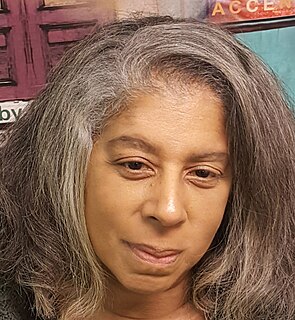 W
WRobin Holder is a contemporary American visual artist and activist Holder is known for her mixed-media printmaking and paintings which focus on themes of spiritual and racial identity, class, social justice, and personal experience. Robin Holder was commissioned to create several site-specific public art installations throughout the Northeastern United States, including New York City and New Jersey. A number of her two-dimensional works can be found in several collections, including the Library of Congress, the Washington State Arts Commission, and the Schomburg Center for Research in Black Culture. Robin has been involved in arts education for over thirty years.
 W
WMargia Kramer is an American documentary visual artist, writer and activist living in New York. In the 1970s and 1980s, Kramer recontextualized primary texts in a series of pioneering, interdisciplinary multi-media installations, videotapes, self-published books, and writings that focused on feminist, civil rights, civil liberties, censorship, and surveillance issues.
 W
WPedro Lasch is a visual artist born in Mexico City, and based in the U.S. since 1994. He produces works of conceptual art, institutional critique, social practice, and site-specific art, as well as paintings, photographs, prints, and works in traditional media.
 W
WJani Leinonen is a Finnish visual artist. Leinonen is known for his public artworks criticising capitalism by using the imagery and icons of corporate brands. He graduated from the Helsinki Academy of Fine Arts in 2002.
 W
WNorm Magnusson is a New York-based artist and political activist and founder, in 1991, of the art movement funism, he began his career creating allegorical animal paintings with pointed social commentaries. Eventually became more and more interested in political art and its potential for persuasion.
 W
WStephanie McMillan is an American political cartoonist, editorialist, and activist from South Florida. A granddaughter of the German commercial animator Hans Fischerkoesen, McMillan aspired to become a cartoonist from the age of ten. During her high school years, she began organizing protests against capitalism and imperialism.
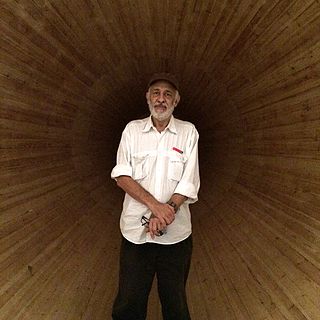 W
WCildo Meireles is a Brazilian conceptual artist, installation artist and sculptor. He is noted especially for his installations, many of which express resistance to political oppression in Brazil. These works, often large and dense, encourage a phenomenological experience via the viewer's interaction.
 W
WHiroshi Nakamura is a Japanese artist who has worked in 'reportage' and surrealist styles. Nakamura attended Nihon University and was involved in many artist groups and social movements such as the Zen’ei Bijutsu-kai and the Seinen Bijustuka Rengō. He is often associated with Reportage Painting, the movement that sought to report on the social issues that arose out of the postwar context by engaging first-hand with the local peoples and their struggles. His Suganaga No. 4 of 1955 exemplifies the concern and style of Reportage that is considered a major As postwar reconstruction of Japan progressed, Nakamura's interest in Reportage evolved into an interrogation of the artist's role in "viewing" the fundamentals of the political and social realms. Into the 1960s, in collaboration with Kōichi Tateishi, Nakamura devised the concept of Kankō geijutsu and, as an extension, he individually developed a painting style centering around trains and female students in uniform situated in an eerie surrealistic dream-like world. Among other influences, he was inspired by Sergei Einstein’s montage theory and Akira Kurosawa’s films which contributed to his signature distortion of perspective that he developed through his career.
 W
WSheryl Oring is an international performance artist and art professor. She is known for the "I Wish to Say" series of performances, where participants dictate messages that she transcribes using an old typewriter. She is also the Chair of the James Pearson Duffy Department of Art and Art History at Wayne State University. She began her career as a journalist, before moving to Germany to study art.
 W
WPyotr Andreyevich Pavlensky is a Russian contemporary artist. He is known for his controversial political art performances, which he calls "events of political art". His work often involves nudity and self-mutilation. Pavlensky makes the "mechanics of power" visible, forcing authorities to take part in his events by staging them in areas with heavy police surveillance. By doing so, "the criminal case becomes one of the layers of the artwork" and the government is "[drawn] into the process of making art".
 W
WMichael Gustavius Payne is a Welsh figurative painter. He paints primarily in oils and is influenced by mythological themes within a contemporary context. During his early exhibiting career he was known as Michael Payne, before he began using his full name. Since late 2012 he has dropped his first name and now uses the shorter Gustavius Payne.
 W
WJean Peters is a German Journalist, Author and Tactical Media Artist. He isn't known as founding member of the Peng! collective, with which he won the Aachen Peace Prize in 2018., and his investigative journalism at Correctiv.
 W
WPablo Ruiz Picasso was a Spanish painter, sculptor, printmaker, ceramicist and theatre designer who spent most of his adult life in France. Regarded as one of the most influential artists of the 20th century, he is known for co-founding the Cubist movement, the invention of constructed sculpture, the co-invention of collage, and for the wide variety of styles that he helped develop and explore. Among his most famous works are the proto-Cubist Les Demoiselles d'Avignon (1907), and Guernica (1937), a dramatic portrayal of the bombing of Guernica by German and Italian air forces during the Spanish Civil War.
 W
WSheila Pinkel is an American visual artist, activist and educator whose practice includes experimental light studies, photography, conceptual and graphic works, and public art. She first gained notice for cameraless photography begun in the 1970s that used light-sensitive emulsions and technologies to explore form; her later, socially conscious art combines research, data visualization, and documentary photography, making critical and ethical inquiries into the military-industrial complex and nuclear industry, consumption and incarceration patterns, and the effects of war on survivors, among other subjects. Writers identify an attempt to reveal the unseen—in nature and in culture—as a common thread in her work.
 W
WDiego María de la Concepción Juan Nepomuceno Estanislao de la Rivera y Barrientos Acosta y Rodríguez, known as Diego Rivera, was a prominent Mexican painter. His large frescoes helped establish the mural movement in Mexican and international art.
 W
WDavid Grant Rosen was a South African fashion designer and artist. Trained as a painter, he is known primarily for his political fashion, art and activism, from his anti-apartheid designs in the 1980s to the Reason8 clothing label in the United States.
 W
WRonald Savage is an American entrepreneur, hip hop artist, author, and activist. He was known as the "crate boy" for Jazzy Jay, who was the DJ for Afrika Bambaataa. In 2016, he publicly accused Bambaataa of sexually molesting him. Ron " Bee-Stinger" Savage also is the service mark owner of the registered brand Hip Hop Movement.
 W
WVictor Sloan MBE is a Northern Irish photographer and artist.
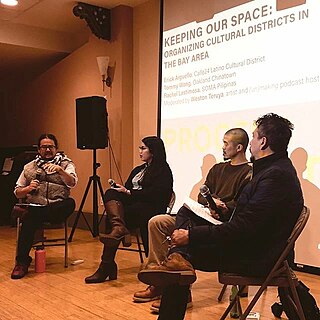 W
WWeston Teruya is an Oakland-based visual artist and arts administrator. Teruya's paper sculptures, installations, and drawings reconfigure symbols forming unexpected meanings that tamper with social/political realities, speculating on issues of power, control, visibility, protection and, by contrast, privilege. With Michele Carlson and Nathan Watson, he is a member of the Related Tactics artists' collective and often exhibits under that name.
 W
WNadezhda Andreyevna Tolokonnikova, nicknamed "Nadya Tolokno", is a Russian conceptual artist and political activist. She was a member of the anarchist feminist group Pussy Riot, and has a history of political activism with the controversial street art group Voina. On August 17, 2012, she was convicted of "hooliganism motivated by religious hatred" after a performance in Moscow Cathedral of Christ the Saviour and sentenced to two years' imprisonment. On December 23, 2013, she was released early with another Pussy Riot member Maria Alyokhina under a newly passed amnesty bill dedicated to the 20th anniversary of the Russian constitution.
 W
WPyotr Verzilov is a Russian-Canadian artist and activist who came to prominence as the unofficial spokesperson of the band Pussy Riot when he was arrested and jailed by the Russian state in 2012. Verzilov has been married to Pussy Riot member Nadezhda Tolokonnikova.
 W
WWolf Vostell was a German painter and sculptor, considered one of the early adopters of video art and installation art and pioneer of Happenings and Fluxus. Techniques such as blurring and Dé-coll/age are characteristic of his work, as is embedding objects in concrete and the use of television sets in his works. Wolf Vostell was married to the Spanish writer Mercedes Vostell and has two sons, David Vostell and Rafael Vostell.
 W
WKacey Wong is a Hong Kong visual artist and educator – formerly Assistant Professor at the School of Design, Hong Kong Polytechnic University. Wong has received the Hong Kong Contemporary Arts Award by the Hong Kong Art Museum (2012), Best Artist Award (2010); and Rising Artist Award and Outstanding Arts Education Award (2003). Wong is politically engaged through his art, and is founding member of art-activist groups Art Citizens and the Umbrella Movement Art Preservation.
 W
WTavar Zawacki formerly known as 'ABOVE' is an American abstract artist living and working between Lisbon, Portugal, and Bali, Indonesia. For twenty years (1996–2016) Tavar Zawacki created and signed all of his artworks with his street artist pseudonym, 'ABOVE'. Tavar was born and raised in California until the age of 19, at which time, Zawacki bought a one-way flight from California to Paris, France, bringing with him a backpack full of art supplies, all the money in his bank account, and a 'rise above your fears' approach to starting his art career. Starting in Paris in 2000, Tavar transitioned from painting traditional letter style graffiti of A-B-O-V-E, to his 'Above arrow' icon that represented his optimistic mentality to 'rise above fears, challenges, and anything holding you back from your goals.' During a 20-year period, the artworks of ABOVE could be seen in over 100 cities spanning 50 countries around the world.